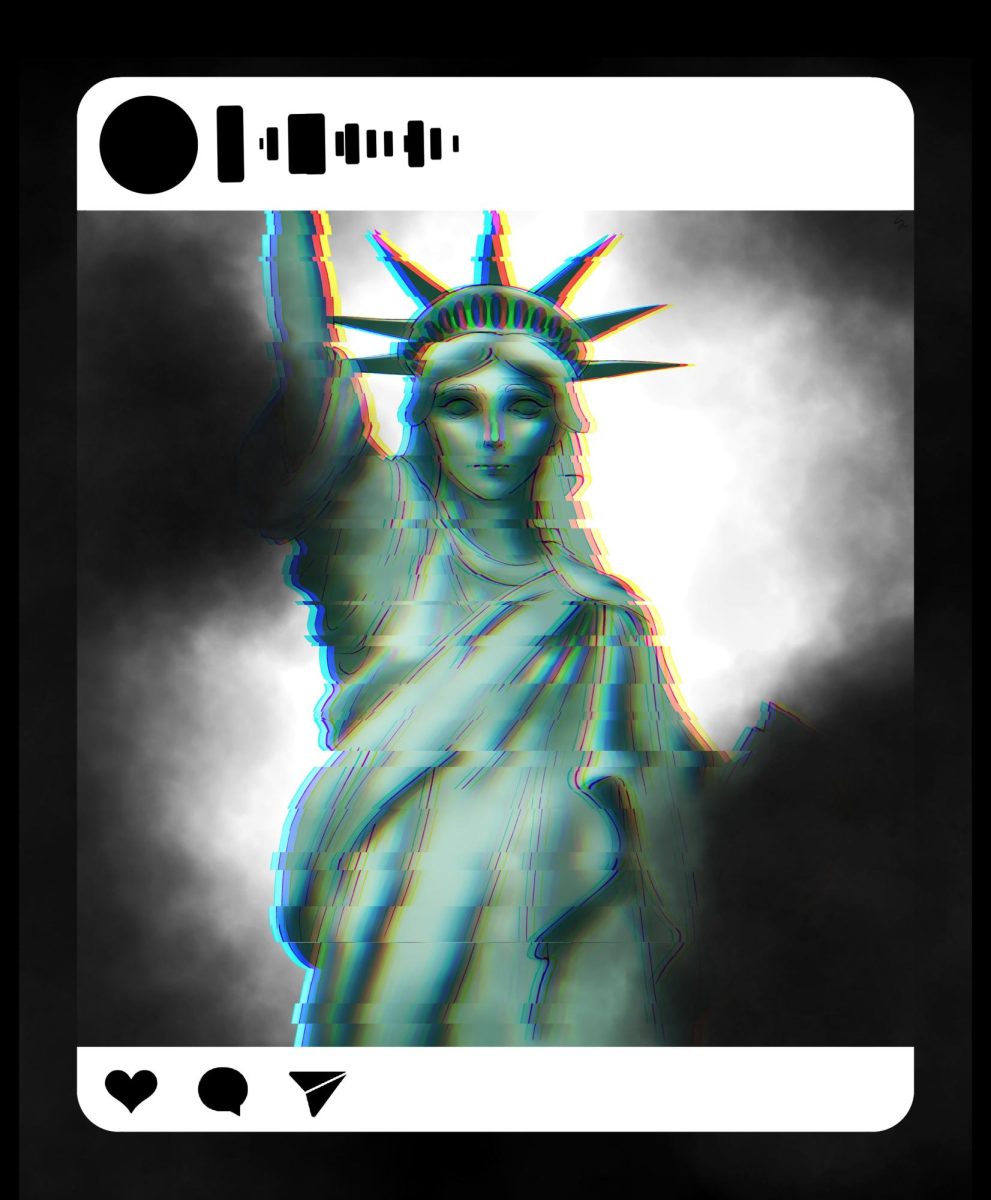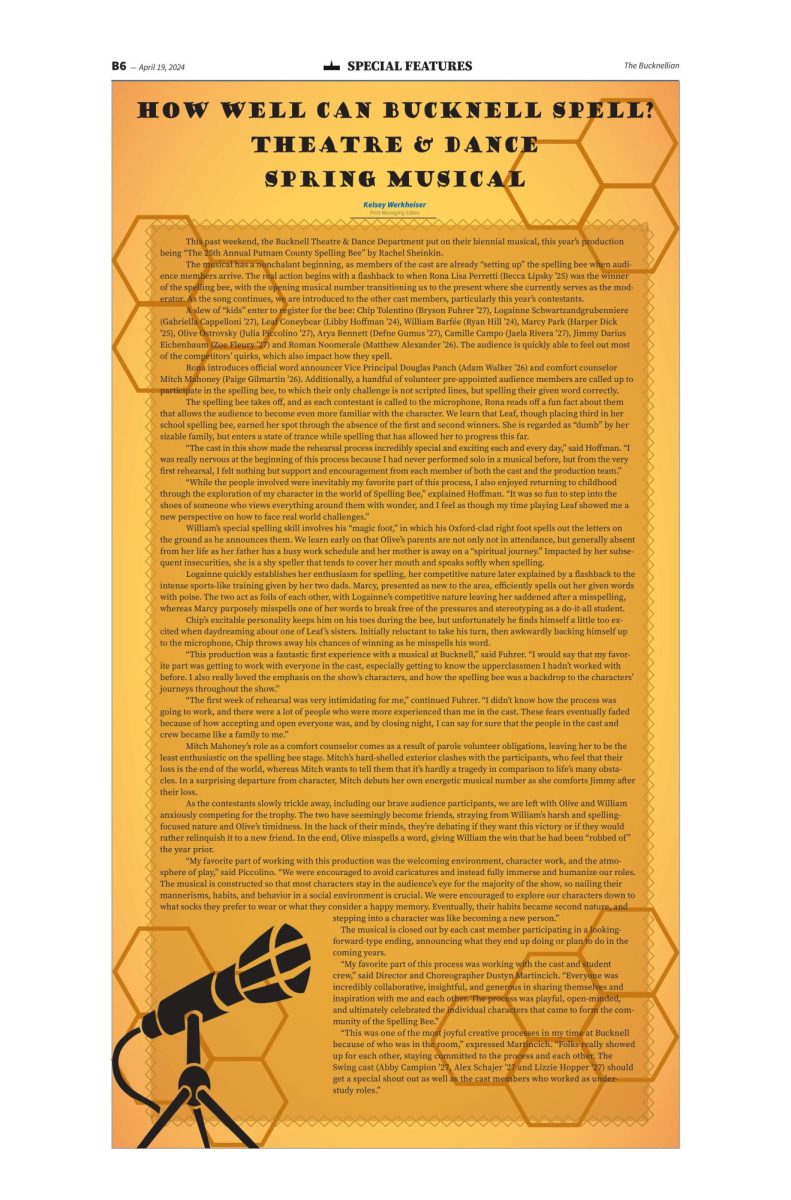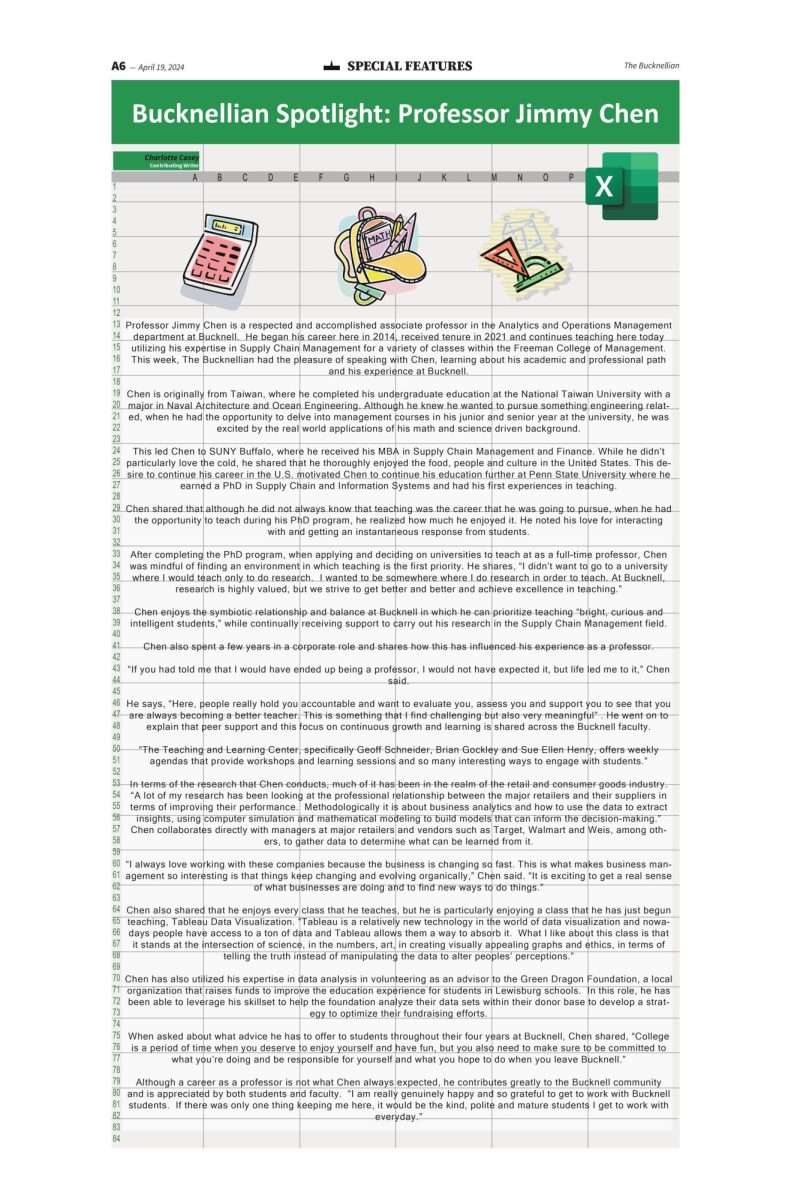By Olivia Seecof
Writer
String theory could potentially bridge the gap between features of the micro-world and the macro-world and lead to further development of a unified theory, said a world-renowned theoretical physicist at a talk on Tuesday.
On April 19, Trout Auditorium was filled to capacity as Brian Greene delivered his lecture “Breakthrough Thinking: Challenging What We Know.” The overflow was directed to the Rooke Chemistry auditorium to watch a live streaming of Greene’s lecture. The talk, which was free and open to the public, was the sixth lecture of the ongoing Bucknell Forum series, “Creativity Beyond the Box.”
“Science is a dramatic story of adventure,” Greene said. He integrated the ideas of science and creativity throughout his lecture, saying that “everyone doesn’t need to be excited about science, but everyone can be,” and that “it is a great opportunity for the arts to be inspired by science.” These statements received a long round of applause from the crowd of students.
Through narrated video clips and explanations in simple terms, Green gave background on why the study of the formation of the universe is so captivating.
“Math is not just symbols on a paper; it actually shows you something on how the world works,” Greene said.
An analogy that Greene included was to show how a 10th dimension is possible. He instructed the audience to imagine different dimensions curling up and being able to trace that curl–like an ant walking around a telephone wire. Another analogy was that of the universe being a big rubber sheet, and the sun is a bowling ball stretching the sheet. The Earth travels around the sun on the path determined by the curvature of the bending of the sheet like a marble travels around the sheet stretched by the bowling ball.
“I thought he made it really easy to follow with the analogies he used and the visuals. He was also really enthusiastic and engaging,” Kelly Burkhart ’14 said.
String theory is very complex, so it is quite possible that many non-physics specialists got lost in some of the terminology and concepts. Greene spent much of his lecture explaining how the strings that make up the quarks of protons, neutrons and electrons vibrate in different patterns. These different patterns create different kinds of particles. String theory sets up the framework to provide a unifying theory. Greene said that the string theory “suggests that maybe we are one of a multitude of universes.”
“[The lecture] was baffling and enlightening at the same time,” Nicole Diamantides ’14 said.
According to Greene, a scientific genius is able to look at what everyone else is seeing and see something else. Greene definitely satisfies his own qualifications and delivered an enjoyable and informative lecture to the greater University community.
Greene is a leading physicist in his field, and the Washington Post calls him the “single best explainer of abstruse concepts in the world today.” Green has published many books including national best-seller “The Elegant Universe.” In this book Greene explored how quantum mechanics and general theories of relativity transformed the understanding of the universe and introduced the world to the string theory. Green is the co-director of Columbia University’s Institute for Strings, Cosmology and Astroparticle Physics.
“It was really cool to have such a highly respected individual in his field give a lecture on his specialty,” Jeremy Shui ’14 said. “As a current student of physics it was interesting to follow along and test my own understanding.”


























